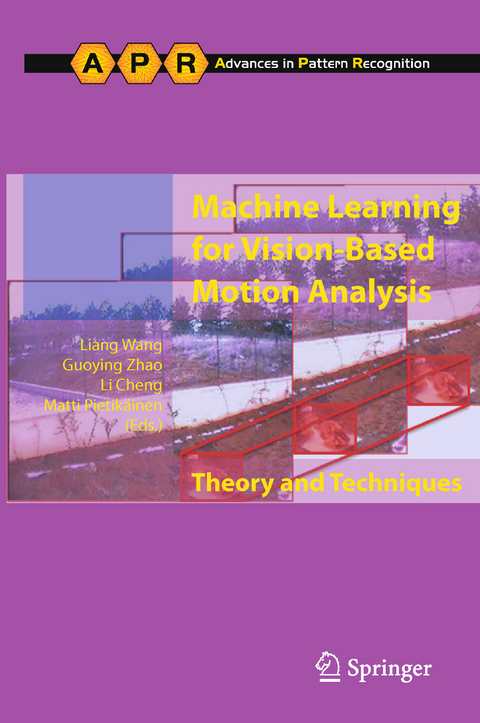
Machine Learning for Vision-Based Motion Analysis
Springer London Ltd (Verlag)
978-1-4471-2607-2 (ISBN)
Techniques of vision-based motion analysis aim to detect, track, identify, and generally understand the behavior of objects in image sequences. With the growth of video data in a wide range of applications from visual surveillance to human-machine interfaces, the ability to automatically analyze and understand object motions from video footage is of increasing importance. Among the latest developments in this field is the application of statistical machine learning algorithms for object tracking, activity modeling, and recognition.
Developed from expert contributions to the first and second International Workshop on Machine Learning for Vision-Based Motion Analysis, this important text/reference highlights the latest algorithms and systems for robust and effective vision-based motion understanding from a machine learning perspective. Highlighting the benefits of collaboration between the communities of object motion understanding and machine learning, the book discusses the most active forefronts of research, including current challenges and potential future directions.
Topics and features: provides a comprehensive review of the latest developments in vision-based motion analysis, presenting numerous case studies on state-of-the-art learning algorithms; examines algorithms for clustering and segmentation, and manifold learning for dynamical models; describes the theory behind mixed-state statistical models, with a focus on mixed-state Markov models that take into account spatial and temporal interaction; discusses object tracking in surveillance image streams, discriminative multiple target tracking, and guidewire tracking in fluoroscopy; explores issues of modeling for saliency detection, human gait modeling, modeling of extremely crowded scenes, and behavior modeling from video surveillance data; investigates methods for automatic recognition of gestures in Sign Language, and human action recognition from small training sets.
Researchers, professional engineers, and graduate students in computer vision, pattern recognition and machine learning, will all find this text an accessible survey of machine learning techniques for vision-based motion analysis. The book will also be of interest to all who work with specific vision applications, such as surveillance, sport event analysis, healthcare, video conferencing, and motion video indexing and retrieval.
Part I: Manifold Learning and Clustering/Segmentation.- Practical Algorithms of Spectral Clustering: Toward Large-Scale Vision-Based Motion Analysis.- Riemannian Manifold Clustering and Dimensionality Reduction for Vision-based Analysis.- Manifold Learning for Multi-dimensional Auto-regressive Dynamical Models.- Part II: Tracking.- Mixed-state Markov Models in Image Motion Analysis.- Learning to Detect Event Sequences in Surveillance Streams at Very Low Frame Rate.- Discriminative Multiple Target Tracking.- A Framework of Wire Tracking in Image Guided Interventions.- Part III: Motion Analysis and Behavior Modeling.- An Integrated Approach to Visual Attention Modeling for Saliency Detection in Videos.- Video-based Human Motion Estimation by Part-whole Gait Manifold Learning.- Spatio-temporal Motion Pattern Models of Extremely Crowded Scenes.- Learning Behavioral Patterns of Time Series for Video-surveillance.- Part IV: Gesture and Action Recognition.- Recognition of Spatiotemporal Gestures in Sign Language using Gesture Threshold HMMs.- Learning Transferable Distance Functions for Human Action Recognition.
| Reihe/Serie | Advances in Pattern Recognition |
|---|---|
| Zusatzinfo | XIV, 372 p. |
| Verlagsort | England |
| Sprache | englisch |
| Maße | 155 x 235 mm |
| Themenwelt | Informatik ► Grafik / Design ► Digitale Bildverarbeitung |
| Informatik ► Theorie / Studium ► Künstliche Intelligenz / Robotik | |
| Schlagworte | computer vision • Graphical Models • Kernel Machines • machine learning • manifold learning • motion analysis • Visual Event Analysis |
| ISBN-10 | 1-4471-2607-6 / 1447126076 |
| ISBN-13 | 978-1-4471-2607-2 / 9781447126072 |
| Zustand | Neuware |
| Informationen gemäß Produktsicherheitsverordnung (GPSR) | |
| Haben Sie eine Frage zum Produkt? |
aus dem Bereich


